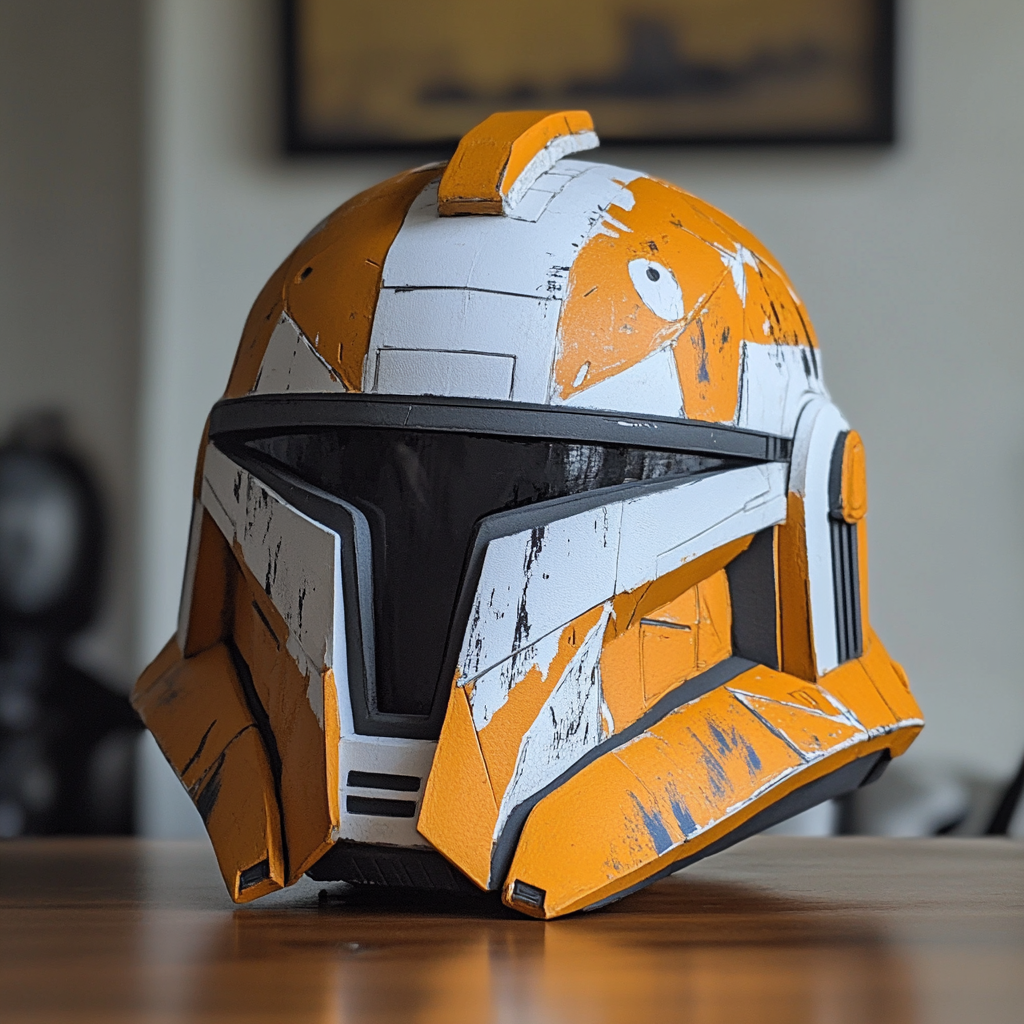Foam vs 3D Printing – Best Uses For Both
Most makers find themselves at a crossroads when choosing between foam crafting and 3D printing for their projects. You might be wondering which method best suits your specific needs, as both techniques offer unique advantages in different scenarios. Whether you’re creating cosplay props, prototypes, or custom parts, your choice between these methods will significantly impact your project’s outcome. Understanding the strengths and limitations of both foam and 3D printing will help you make an informed decision that aligns with your project goals, budget, and timeline.
Overview of Materials
While you explore your options for creating props and costumes, understanding the fundamental differences between foam and 3D printing materials is vital. You’ll find that each material offers unique properties that can enhance your projects in different ways. Your choice between these materials will significantly impact your workflow, budget, and final results.
Characteristics of Foam
About foam materials, you’ll discover they come in various densities and thicknesses, ranging from soft and flexible EVA foam to rigid high-density variants. Your foam options typically include EVA foam mats (2mm to 10mm thick), craft foam sheets, and specialty foams like L200 or HD foam. You can easily cut, shape, and heat-form these materials using basic tools, making them perfect for quick prototyping and lightweight builds.
Characteristics of 3D Printing
On the 3D printing side, you’ll work with materials like PLA, PETG, or ABS filaments, each offering distinct advantages. Your PLA prints will be easier to work with and provide excellent detail, while ABS offers better durability but requires more expertise to print successfully.
In addition to basic filaments, you can explore specialized materials like TPU for flexible parts, or wood-filled filaments for unique textures. Your printer settings will need adjustment for each material type, with temperatures typically ranging from 180°C to 260°C depending on your chosen filament. These materials allow you to achieve precise details down to 0.1mm layer height.
Cost Comparison
The financial aspects of foam crafting versus 3D printing vary significantly, as highlighted in Foam 3D Printing of Thermoplastics: A Symbiosis of Materials and Technology. Your choice between these methods will largely depend on your project scope and budget constraints.
| Cost Factors | |
|---|---|
| Foam Crafting | 3D Printing |
| Initial cost: $30-50 | Initial cost: $200-1000 |
| Material cost: $5-30/sheet | Filament: $20-50/spool |
| Tools: $50-100 | Maintenance: $100-200/year |
Budgeting for Foam
On average, you can start your foam crafting journey with a budget of $100-150. Your initial investment covers basic materials like EVA foam sheets ($5-30 each), contact cement ($10-15), and necessary tools such as heat guns ($20-40) and cutting materials ($15-25).
Budgeting for 3D Printing
Across the spectrum of 3D printing, your initial investment will be higher. You’ll need to budget for a printer ($200-1000), filament spools ($20-50 each), and modeling software (free to $50/month for premium versions).
Considering the long-term investment, your 3D printing setup can become cost-effective if you plan to create multiple projects. You’ll need to factor in electricity costs ($5-10 per large print), maintenance expenses ($100-200 annually), and replacement parts for your printer.
Time Investment
Some projects require different time commitments depending on your chosen method. Your foam crafting can be completed within days, while 3D printing might stretch over a week or more. Your decision between these methods often hinges on how quickly you need the finished product and how much active working time you can dedicate to the project.
Time Required for Foam Crafting
For foam helmet creation, you can expect to spend 8-12 hours of active work spread across 2-3 days. Your basic foam helmet can be cut, assembled, and shaped in a single weekend. With experience, you’ll become faster at pattern cutting and assembly, potentially reducing your working time to 6-8 hours total.
Time Required for 3D Printing
For 3D printing a helmet, you’ll need to allocate 30-50 hours for the printing process alone. Your design work might take 2-4 hours, depending on your modeling skills. The actual printing time varies based on your printer’s speed and the helmet’s complexity.
With 3D printing, you can multitask during the printing phase since your printer does most of the work. Your post-processing tasks, including sanding and finishing, typically add another 4-6 hours to the project timeline. The total project can span 3-5 days, but most of this time is hands-off while your printer works.
Customization Potential
Your ability to customize and modify designs represents a significant difference between foam and 3D printing methods. While both approaches offer unique customization opportunities, they require different skill sets and tools to achieve your desired results. The choice between them often depends on the level of detail you want to achieve and your comfort with digital versus hands-on crafting.
Customizing Foam Helmets
Between cutting, layering, and heat-forming techniques, foam helmets offer you immediate tactile control over your design. You can easily add or remove material, create texture patterns, and modify shapes on the fly. With basic tools like heat guns and craft knives, you’re able to sculpt your vision directly, making quick adjustments as you work.
Customizing 3D Printed Helmets
Helmets created through 3D printing give you unprecedented control over intricate details and precise measurements. You can modify your design digitally before printing, experimenting with different variations without wasting material. Using CAD software, you’re able to create complex geometric patterns and perfectly symmetrical features that would be challenging to achieve with foam.
A major advantage of 3D printed customization lies in your ability to iterate designs quickly. Once you have a base model, you can adjust measurements by millimeters, add ventilation holes, or incorporate mounting points for electronics. With dual-extruder printers, you can even create multi-color designs in a single print, saving time on painting and finishing work.
Durability and Maintenance
For both foam and 3D printed helmets, durability and maintenance requirements vary significantly. Your choice between these materials will impact how long your helmet lasts and how much care it needs. While foam offers easier repairs and modifications, 3D printed pieces provide better structural integrity but can be more challenging to fix if damaged.
Foam Durability
With proper sealing and care, your foam helmet can last through multiple convention seasons. You’ll find foam to be surprisingly resilient, though susceptible to compression and heat damage. Your foam creation requires storage in a cool, dry place and occasional touch-ups with paint or sealant, making maintenance relatively straightforward and cost-effective.
3D Printing Durability
Between different filament types, PLA and PETG offer you varying levels of durability. Your 3D printed helmet can withstand more impact than foam but may shatter under extreme stress. The layer-by-layer construction provides excellent structural integrity, with proper infill settings offering up to 80% of solid plastic strength.
Indeed, your 3D printed helmet’s longevity depends heavily on print settings and post-processing. Using higher infill percentages (40-60%) and proper layer adhesion can significantly increase durability. You’ll find that adding a clear coat not only protects the paint but also strengthens the overall structure, while UV-resistant filaments can prevent degradation from sun exposure.
Tools and Techniques
Once again, the success of your project heavily depends on selecting the right tools and mastering proper techniques. While foam work relies on manual dexterity and heat manipulation, 3D printing requires technical knowledge and digital precision. For advanced applications, you might want to explore Using 3D Printed Foam & Microporous Morphology to combine the benefits of both methods.
Essential Tools for Foam
After gathering your materials, you’ll need a heat gun, sharp cutting tools, and contact cement as your primary equipment. Your toolkit should include various measuring tools, safety gear like gloves and a respirator, and finishing supplies such as primers and paints. Having a dedicated workspace with proper ventilation will help you achieve the best results.
Essential Tools for 3D Printing
After setting up your 3D printer, you’ll need slicing software, digital calipers, and post-processing tools. Your basic kit should include various build plates, filament storage solutions, and maintenance tools. Quality filament is necessary – you’ll want to stock different materials based on your project requirements.
Indeed, your 3D printing arsenal should extend beyond the basics. You’ll benefit from having specialized nozzles for different materials, build surface adhesives, and various post-processing tools like heat guns and sandpaper sets. Monitoring tools such as temperature sensors and humidity meters will help you maintain optimal printing conditions, while modeling software will allow you to create and modify designs to your specifications.
Summing up
As a reminder, your choice between foam and 3D printing will depend on your specific project needs. Foam offers you a cost-effective, beginner-friendly option with quick results and easy modifications, perfect when you need lightweight, comfortable headgear. 3D printing gives you precision and intricate details but requires more investment in both time and money. You can even combine both methods to leverage their strengths – using foam for comfort and 3D printed parts for detailed elements. Your success with either method will ultimately come down to matching your project requirements with the right technique.
FAQ
Q: What are the main cost differences between foam and 3D printing for helmet creation?
A: Foam crafting typically costs between $30-50 for all materials including foam sheets, adhesives, and basic tools. 3D printing requires a higher initial investment of $200-2000 for a printer, plus ongoing costs of $20-50 per filament spool. However, 3D printing allows you to create multiple helmets once you have the equipment, while foam requires new materials for each project.
Q: How do the time requirements compare between foam and 3D printing methods?
A: Foam helmets can typically be completed in 1-3 days of hands-on work, including cutting, shaping, and basic finishing. 3D printed helmets require 20-40 hours of printing time alone, plus additional time for design work (2-8 hours), and post-processing like sanding and painting (4-8 hours). The total 3D printing process usually takes 3-7 days to complete a single helmet.
Q: Which method is better for achieving detailed designs and custom features?
A: 3D printing excels at creating precise, intricate details and perfectly symmetrical patterns that would be difficult to achieve by hand. The digital design process allows for exact measurements and complex geometric shapes. Foam construction is better suited for organic shapes, quick modifications during building, and designs that require flexibility. Both methods can be combined – using 3D printed details on a foam base, or foam padding inside a 3D printed shell.

